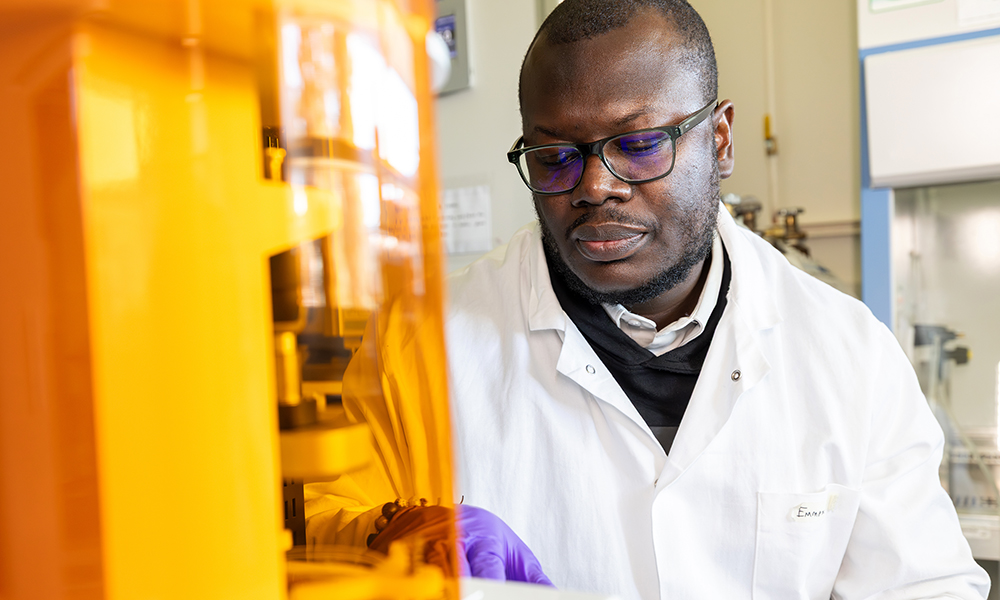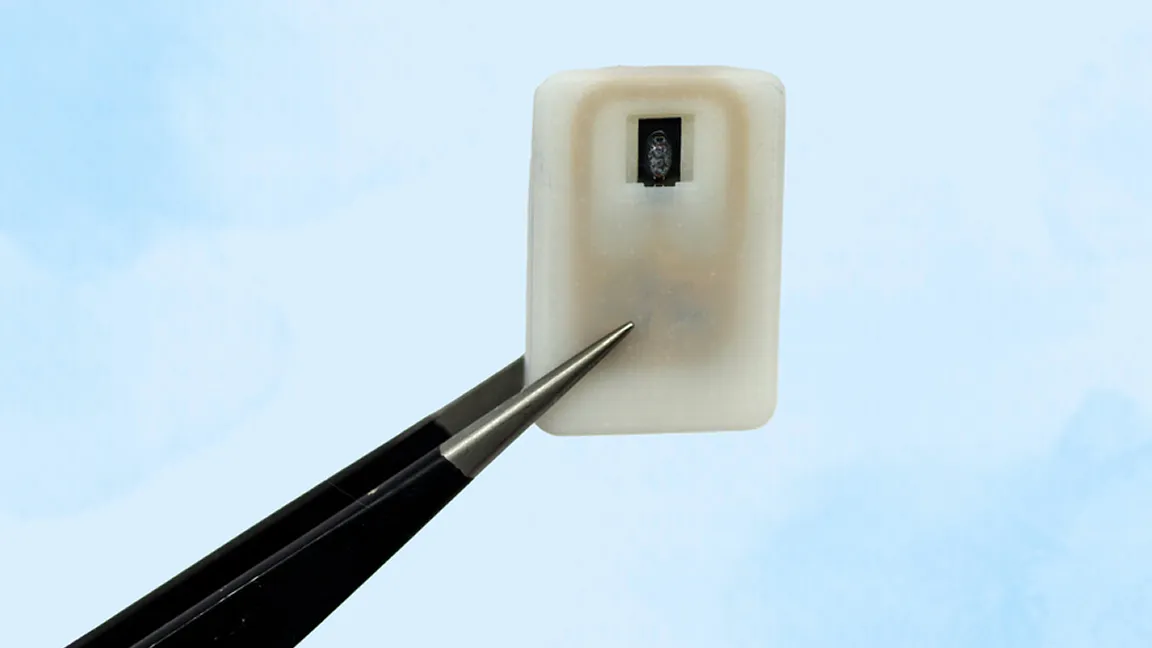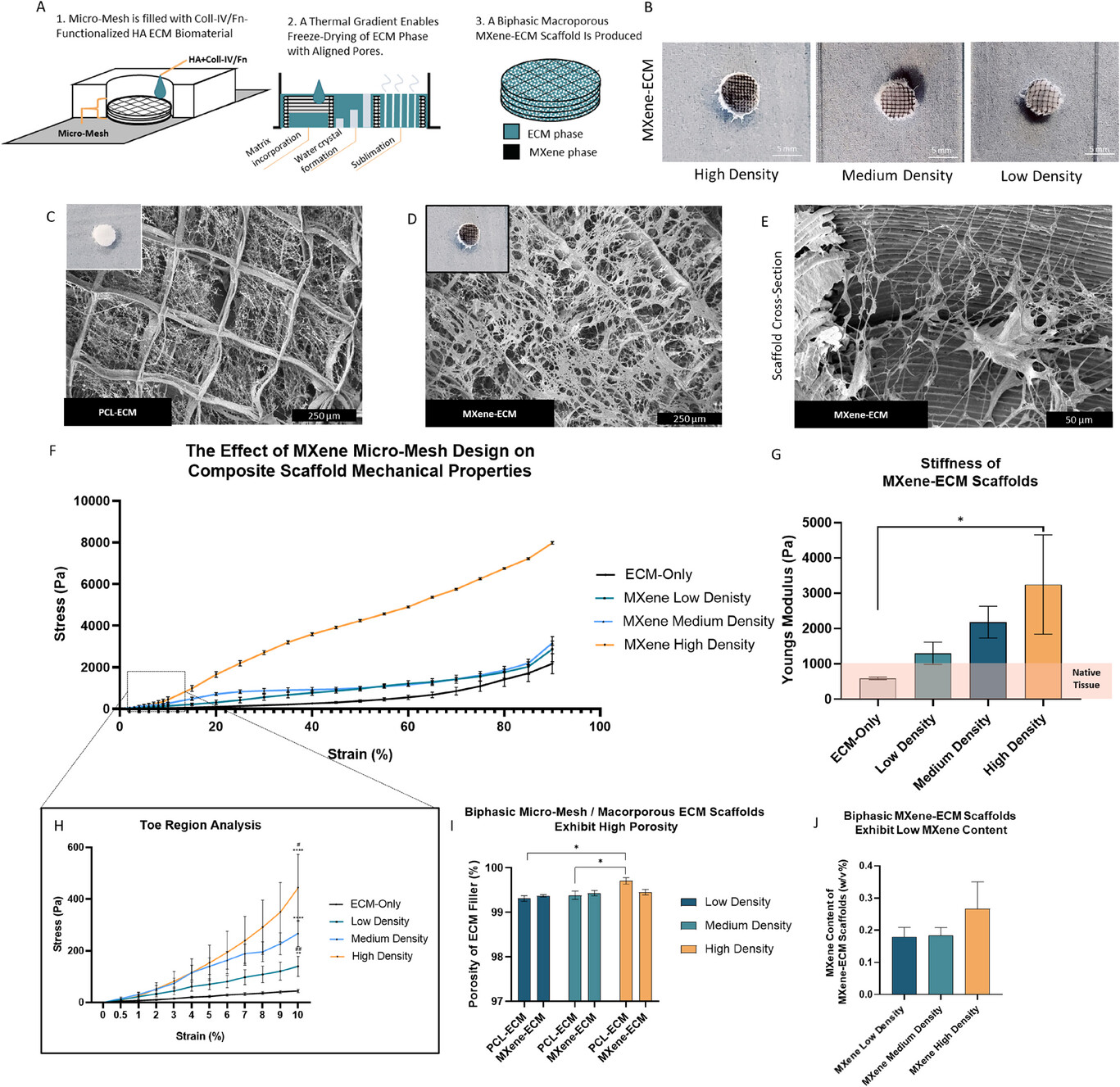In July 2025, 3D printing in medicine took several bold steps forward, not just as a tool for prototyping or visualization, but as a way to build real, functional treatments that could save lives. From soft implants for healing damaged spinal cords to living lung models for testing treatments, scientists around the world are combining biology, materials science, and additive manufacturing (AM) to push the boundaries of what medicine can do.
These stories are all happening now, in labs in Canada, Ireland, and the U.S., and they show just how quickly 3D printing is moving from the bench to the bedside.
A Living Lung in the Lab
At the University of British Columbia Okanagan, Dr. Emmanuel Osei and his team have developed a 3D bioprinted model that closely mimics the structure and behavior of human lung tissue. Using a custom bioink made from modified gelatin and polymers, the researchers printed a soft, complex structure with built-in channels that imitate real airways and blood vessels.

Dr. Emmanuel Osei has developed a way to 3D print tissue that resembles a living lung. Image courtesy of UBCO.
This “living” lung model not only looks like human tissue, it reacts like it too, especially when tested with cigarette smoke. That means scientists can now study how lung diseases, such as cancer or Chronic Obstructive Pulmonary Disease (COPD), develop in a more realistic environment. It also opens the door for testing new drugs without depending on limited or inconsistent human tissue samples.
In the future, researchers may even be able to create personalized models from a patient’s own cells, helping doctors find better treatments faster.
Making Silicone Devices That Stick
Meanwhile, in Hawaiʻi, researchers at the University of Hawaiʻi at Mānoa have solved a common problem with soft medical devices: the layers don’t always stick together well. Many soft devices, like implants or wearable sensors, are built from silicone, printed or molded in thin layers. But if those layers don’t bond properly during manufacturing, the device can peel apart, leak, or fail.
Assistant Professor Te Faye Yap and her collaborators have created a simple yet powerful framework that predicts how well silicone parts will stick based on how long and how hot they’re cured. This means engineers can now 3D print soft silicone structures that are stronger, more flexible, and more reliable, even when printed quickly.
The team demonstrated this by printing curved soft robot parts and other flexible components that held together twice as well as usual. It’s a small tweak with big potential, especially for future biomedical implants that need to move with the body without breaking down.
A Wireless Chip That Delivers Medicine on Demand
MIT engineers are designing a tiny chip that could be implanted under the skin to release medicine exactly when the body needs it, without needles or pills. The chip contains a “3D printed reservoir filled with powdered glucagon,” a lifesaving drug for people with diabetes.
What makes it special is that the chip can be wirelessly activated to heat a special metal alloy, which bends and opens the reservoir to release a dose. Tests in mice showed it can deliver multiple doses over four weeks, and the team hopes to extend this to a full year in the future.
This tiny implant could be a game-changer for diabetic patients, and potentially anyone who needs time-released or emergency medication. It also hints at a future where personalized, programmable drug delivery is built into our bodies.

MIT engineers 3D print an implant for diabetic patients. Image courtesy of MIT.
Repairing the Spine with 3D Printed Signals
In Dublin, researchers at the Royal College of Surgeons in Ireland (RCSI), officially known as RCSI University of Medicine and Health Sciences, in collaboration with Trinity College Dublin‘s School of Chemistry and the AMBER research centre, have developed a 3D printed implant designed to help repair spinal cord injuries using electrical stimulation.
The implant mimics the structure of the spinal cord and is made with ultra-thin nanomaterials typically used in battery technology. These materials were embedded into a soft, gel-like structure using advanced 3D printing.
When tested in the lab, the implant successfully delivered electrical signals to neurons and stem cells, helping them grow, which is a key step toward repairing spinal damage. The researchers also found they could tweak the internal structure of the implant to improve its effects. While still in early stages, the team believes this approach could lead to a new generation of medical devices not only for spinal repair, but also for heart, bone, and brain conditions where electric signals support healing.

Structure and mechanics of composite scaffolds. Image courtesy of RCSI University of Medicine and Health Sciences.
What made this project stand out is that the researchers worked closely with a patient advisory panel. The group included doctors, scientists, and seriously injured rugby players, with support from the Irish Rugby Football Union Charitable Trust. These panel members shared what life with a spinal cord injury is really like, from daily pain and limited movement to their hopes for recovery. Their feedback helped shape the implant’s design, including how it feels, how it delivers electrical signals, and the results for which to aim. This kind of early patient involvement helped keep the focus on what matters to people living with the injury, not just what looks good in the lab.
One of the panel members, Ciarán McCarthy, was left paralysed after a freak injury while playing rugby over 20 years ago. He explained that even small improvements, like less pain or better movement, can make a big difference in daily life. For him and others, those changes matter more right now than the long-term hope of walking again. His perspective helped guide the design of the implant to focus on real, everyday needs.
“Promoting the regrowth of neurons after spinal cord injury has been historically difficult however our group is developing electrically conductive biomaterials that could channel electrical stimulation across the injury, helping the body to repair the damaged tissue,” explains Professor Fergal O’Brien, Deputy Vice Chancellor for Research and Innovation and Professor of Bioengineering and Regenerative Medicine at RCSI and Head of RCSI’s Tissue Engineering Research Group (TERG).
While these recent breakthroughs may focus on different parts of the body, they all point to the same idea: that 3D printing is becoming a very important foundation for next-generation medical care. As research moves from the lab to clinical trials, the promise of regenerative medicine and patient-specific therapies is becoming a reality.

